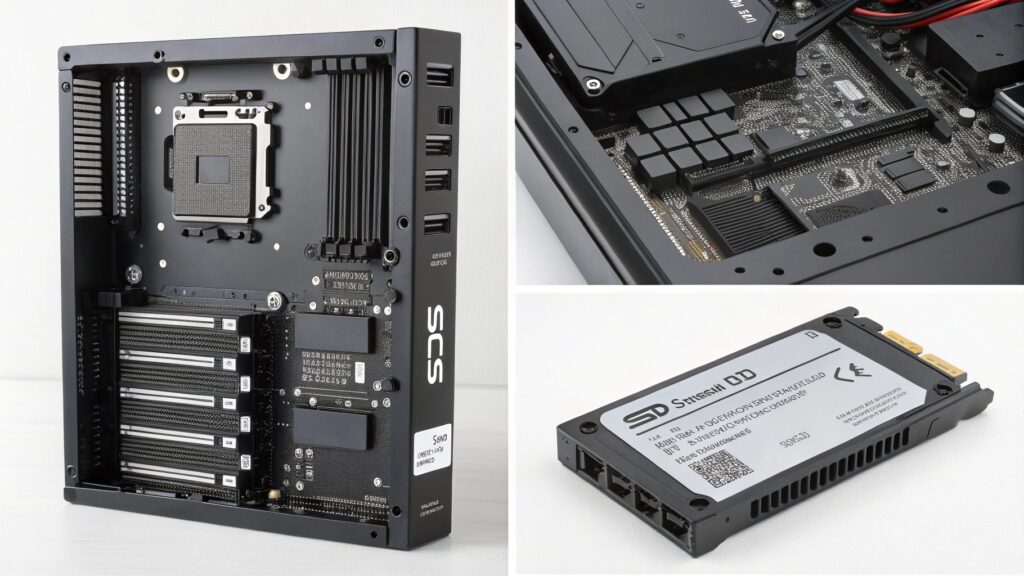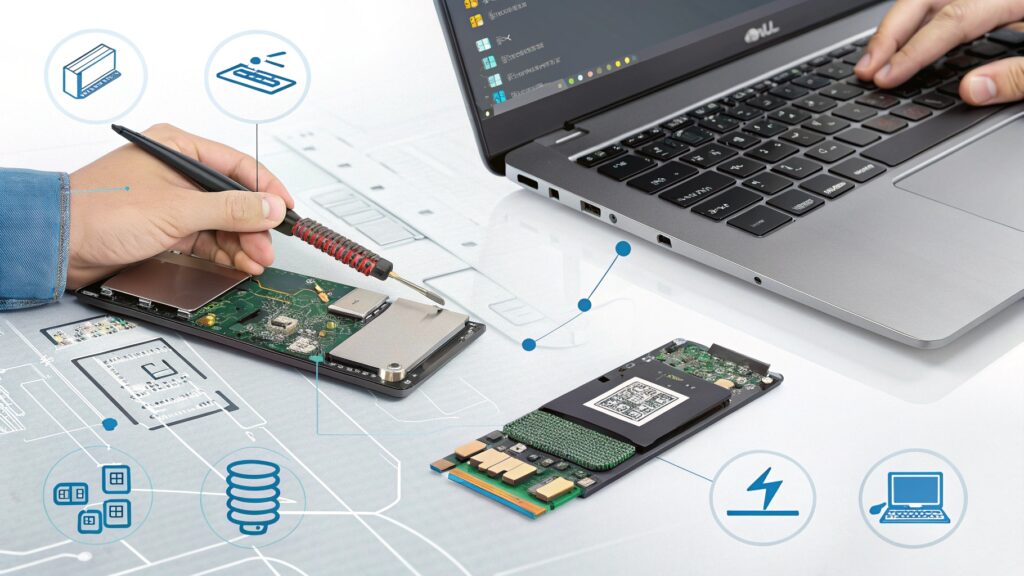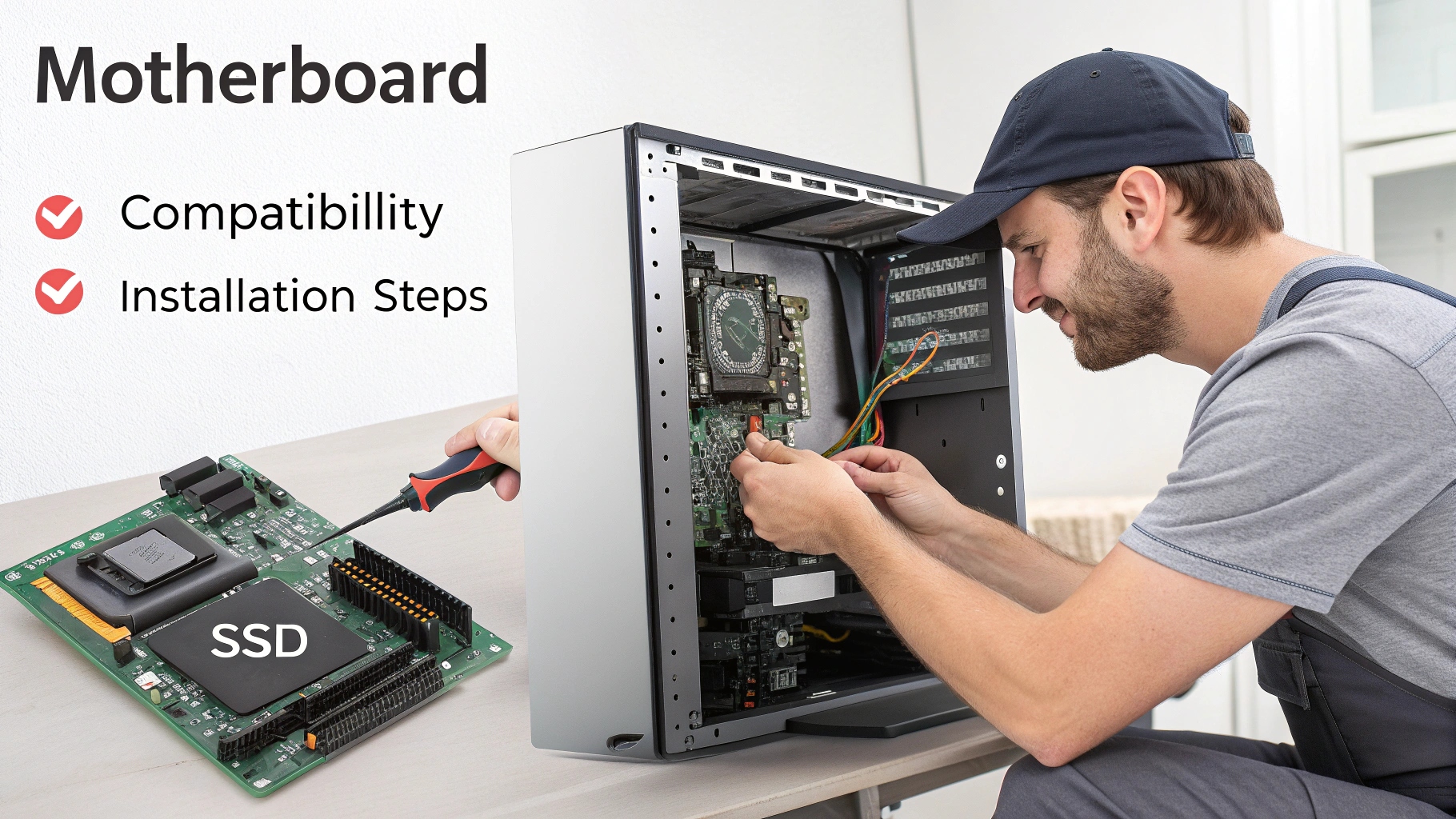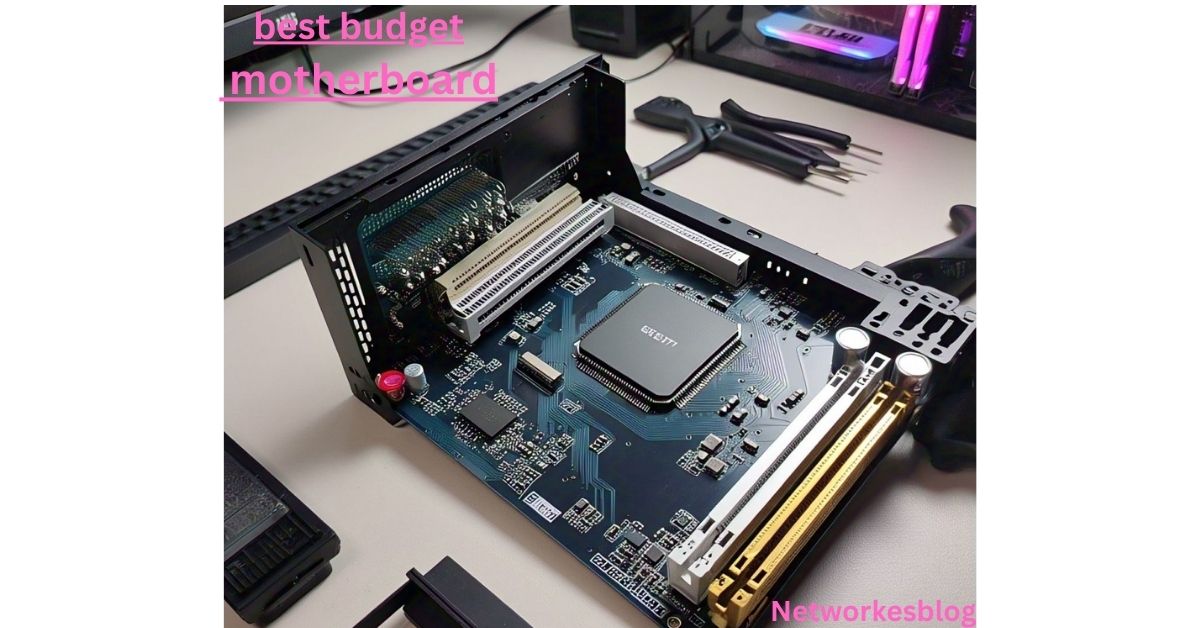Wondering ifCan Your Motherboard Use Any SSD? Discover the differences between SATA, NVMe, and M.2 SSDs, and learn how to check for SSD compatibility.
In the fast-evolving world of PC components, upgrading to an SSD (Solid State Drive) is one of the easiest and most impactful ways to boost your computer’s performance. But a common and critical question often arises:
At first glance, it may seem like all SSDs are created equal. After all, they serve the same purpose: faster storage. However, not all SSDs are compatible with every motherboard, and using the wrong one can lead to frustration, wasted money, or even system failure.
This in-depth guide will walk you through everything you need to know about SSD compatibility:
- Different SSD types and interfaces
- Motherboard slot and protocol requirements
- BIOS and UEFI implications
- PCIe lane usage
- Legacy vs modern support
- Practical solutions for incompatibility
Let’s break down what really matters when deciding whether your motherboard can use any SSD.
SSD 101: The Core Types You Need to Know
Understanding the SSD landscape is essential before matching one with your motherboard. Here are the three main types of consumer SSDs:
SATA SSD (2.5-inch)
- Form Factor: 2.5 inches, similar to laptop hard drives
- Connector: SATA III data + SATA power
- Speed: Up to ~550 MB/s
- Compatibility: Almost universally compatible with any motherboard that has SATA ports
Safest choice if you’re unsure what your motherboard supports
M.2 SATA SSD
- Form Factor: M.2 “gumstick” shape
- Connector: M.2 slot using SATA protocol (usually B or B+M key)
- Speed: Up to ~550 MB/s
- Compatibility: Only works in M.2 slots that support SATA, not just PCIe/NVMe
Easily confused with NVMe—check slot specs carefully!
M.2 NVMe SSD (PCIe)
- Form Factor: M.2 stick, usually with M-key
- Interface: PCIe x2 or x4 lanes, NVMe protocol
- Speed: 1,500 MB/s to over 7,000 MB/s (depending on PCIe Gen 3 or Gen 4)
- Compatibility: Requires M.2 slot that supports PCIe/NVMe, and UEFI BIOS for booting
Blazing fast, perfect for gaming, editing, and multitasking
Can Your Motherboard Use Any SSD? It Depends On…

Let’s get to the heart of the matter: SSD and motherboard compatibility.
No, your motherboard cannot use any SSD. Here’s why:
Interface Compatibility
Every SSD needs the right interface to communicate with the motherboard. These include:
- SATA: Standard for older drives
- PCIe/NVMe: Used by M.2 NVMe drives
- PCIe Add-in Card (AIC): High-end NVMe drives that go into PCIe slots
If your motherboard lacks the matching interface, the SSD simply won’t work.
Form Factor Fit
The form factor describes the SSD’s shape and connection style. Common examples:
- 2.5″ SATA fits in drive bays, connected via cables
- M.2 plugs directly into the motherboard
- Add-in cards (AIC) go into x4/x8/x16 PCIe slots
Your motherboard must support both the SSD’s interface and its physical shape.
M.2 Slot Configuration
Many motherboards now include M.2 slots, but not all are the same.
- Some support only M.2 SATA
- Some support only M.2 PCIe/NVMe
- Many support both (dual mode)
Look at:
- Key types: M-key (PCIe), B-key (SATA), or B+M (both)
- PCIe lanes: More lanes = faster potential speed
Check the motherboard manual for exact support.
BIOS/UEFI Support
Booting from an NVMe SSD usually requires:
- UEFI BIOS
- Bootable NVMe driver support
Older systems (pre-2015) might need:
- BIOS update
- NVMe driver loaded manually
Some won’t boot from NVMe at all, even with an adapter card.
PCIe Lane Allocation
For high-end NVMe SSDs (Gen 4/Gen 5), you need:
- Compatible PCIe generation (Gen 3, 4, or 5)
- Sufficient PCIe lanes from the CPU and chipset
Otherwise:
- The SSD may run slower
- Other devices (like GPUs) may be affected
How to Check SSD Compatibility With Your Motherboard
Follow these steps:
Identify Your Motherboard
Use:
dxdiagorCPU-Zfor Windows- Visual inspection of the board
- BIOS splash screen on boot
Visit Manufacturer’s Website
Look up:
- M.2 slot support (SATA, NVMe, or both)
- Supported PCIe versions
- Number of SATA ports
Match With SSD Specs
Compare:
- M.2 key type
- Interface type (SATA vs NVMe)
- Drive dimensions (2280 is most common)
Real-World Compatibility Examples
| Motherboard Model | Supports SATA SSD | Supports M.2 SATA | Supports M.2 NVMe | Notes |
|---|---|---|---|---|
| ASUS Prime B550M-A | Yes | Yes | Yes | PCIe Gen 4 supported |
| MSI B460M Pro | Yes | Yes | No | M.2 slot SATA-only |
| Gigabyte Z790 AORUS Elite | Yes | Yes | Yes | PCIe 5.0 ready, very fast |
| Older Dell OptiPlex 3020 | Yes | No | No | SATA SSD only |
Can You Use an NVMe SSD If Your Motherboard Doesn’t Support It?

Yes, but with workarounds:
Option 1: PCIe to M.2 NVMe Adapter
Install the NVMe SSD into a PCIe adapter card, then plug it into a free PCIe x4 or x16 slot.
May work for data drives
Booting from it depends on BIOS support
Option 2: Use a SATA SSD Instead
If your motherboard lacks M.2 or NVMe support, choose a 2.5” SATA SSD. It still offers a major performance improvement over traditional hard drives.
FAQs
Can I use any M.2 SSD with any motherboard?
No. Your motherboard must support the M.2 SSD’s protocol (SATA or NVMe) and key type.
What SSD is safest if I don’t know my motherboard specs?
A 2.5” SATA SSD is the safest choice—it works with nearly all motherboards with SATA ports.
Is NVMe worth it over SATA?
Yes. NVMe SSDs are 3-10x faster, ideal for gaming, rendering, and large file transfers.
Can I add SSDs to old desktops?
Absolutely! Most old desktops support 2.5” SATA SSDs and will see a big performance boost.
Can I boot Windows from an NVMe SSD on any motherboard?
No. You need a UEFI BIOS and NVMe boot support to install Windows on an NVMe SSD.
Conclusion
Not all SSDs are universal.
Your motherboard’s:
- Interfaces (SATA vs PCIe)
- Form factor support (2.5”, M.2)
- BIOS capabilities
- PCIe lane allocation
…all determine whether a particular SSD will work.
Pro Tip:
Always read your motherboard manual or specs before buying a new SSD. Use PCPartPicker.com for compatibility checks, and don’t hesitate to update your BIOS for broader support.
If you’re upgrading an older PC, stick with 2.5” SATA SSDs for max compatibility. For modern builds, go for NVMe Gen 3 or Gen 4 for blazing speed.
Also Read:
Everything You Need to Know About Motherboard Screws: Types, Sizes & Installation Guide
The MEG Trident X2 Motherboard: A Complete Guide for Gamers and Creators (2025)
Best Video Card for ASRock Mini ITX Motherboard: 2025 Buyer’s Guide



